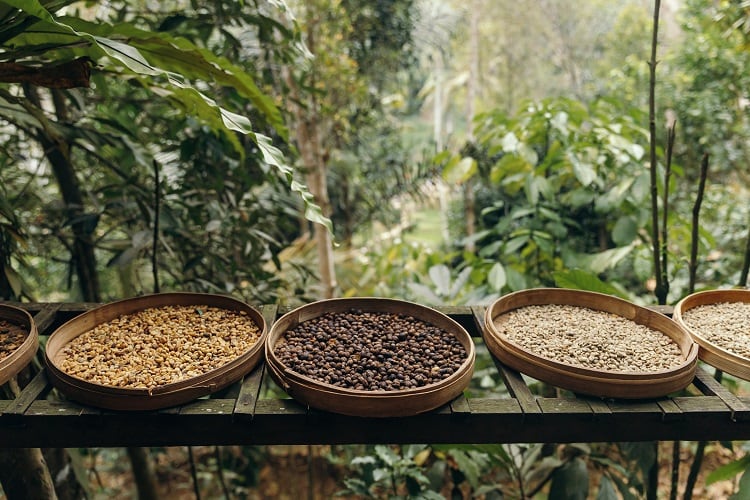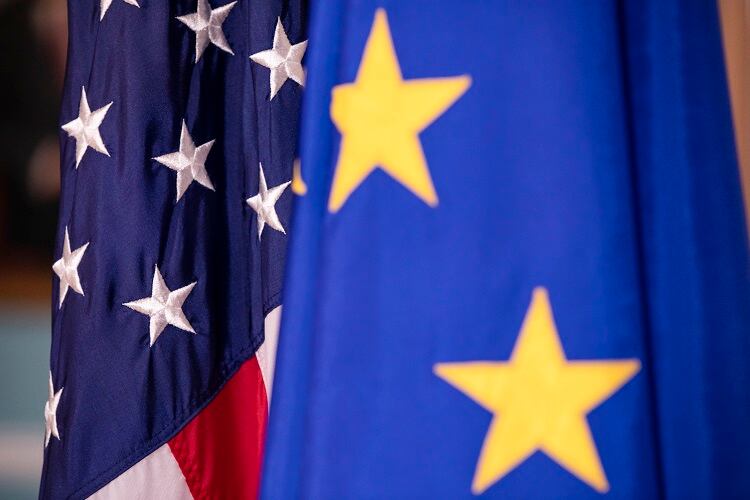At Food Ingredients Europe in Frankfurt in November, FoodNavigator spoke to ofi and FoodChainID about how technology, through enabling traceability and streamlining regulatory data, makes compliance easier and more straightforward.
Complying to EUDR
Global ingredients company ofi is a key provider of coffee and cocoa, two commodities which are coming under increasing scrutiny due to the fact that they are often linked to deforestation. This is important, as the implementations of the European Union Deforestation Regulation (EUDR) will become applicable in December this year. Companies selling in the EU, including ofi, must comply.
Central to this compliance is traceability. Coffee and cocoa are products with long, complex supply chains and are often grown in remote areas. Being aware of every aspect of these supply chains is extremely difficult. Luckily, technology can collect and store the relevant data.

Ofi uses GPS to trace its supply chain, according to the company’s head of sustainability Dr. Christopher Stewart. The technology, which has been used for many years, has traditionally been ‘more onerous’, he told FoodNavigator, but, due to the introduction of the Forest Loss Risk Index in 2018, which evaluates areas by deforestation risk, the efficiency of ofi’s traceability is improving.
“We introduced this index which looks at historical deforestation for the last 20 years, knowing that with thousands of buying stations we can't be everywhere at once, so we need to act on priority.” This is the initial step towards the eventual aim of 100% traceability.
“That was our first step towards kind of a systematic approach across all of ofi's sourcing. [We looked at] where that risk index was high and that's where we started mapping.”
Ofi uses trained enumerators, who, through handheld GPS trackers built into their phones, track individual farm plots on the ground in order to get as detailed a map as possible of the sources of ofi’s commodities. Working with these teams, ofi works out how far from each of its buying stations one would have to go to source coffee or cocoa and creates a radius around it.
For farms under four hectares, under the EUDR, the company can take individual GPS points for each farm. Anything above four hectares requires one to walk around the farm boundary, generating a polygon map.
“Those points and polygons are loaded onto our office platform, linked with individual identifiers for each one of the farmers, and then that is then followed through our internal traceability system all the way through processing to the final product,” Stewart told us.
The challenges of mapping all the farms and farmers (ofi estimates it works with 300,000 cocoa farmers alone) is not just logistical – getting to the right places in order to map them – but social as well.

“You need to work with the farmer, ultimately. You need to have somebody who has established a personal connection with that farmer, and that's hundreds of thousands of personal connections that you need to establish so you can send somebody to that farm with a GPS.”
The EU has adopted the FAO’s definition of a forest, which it defines as ‘lands of more than 0.5 hectares, with a tree canopy cover of more than 10 percent.’ This, according to Stewart, has the potential to cause false deforestation alerts.
“There's a great risk of false positives from cocoa farmers who are acting very responsibly but might decide that they want to harvest three or four trees on their farm for timber purposes or because those trees are unhealthy, they're a risk to the farmer, or they're in the wrong place. That will, under the FAO definition and with 100% coverage from satellites, create a deforestation alert, which means we have to go out and (investigate whether the farmer was) properly managing their trees, or (if it is) genuinely a deforestation event.”
Ofi are currently working on technology to reduce the risk of such false positives. “We've invested in a number of remote sensing solutions that we're ground proofing so that we can be able to say what a farm management event looks like rather than a deforestation event. We believe that this has to be adopted.”
FoodChainID: Speeding up regulatory information
Compliance can often take up a lot of time, which can eat into productivity. Streamlining it, according to Wes Frierson, VP for Strategy at US software company FoodChainID, not only makes companies more efficient, but provides them with a competitive advantage.
Right now, Frierson told FoodNavigator, the process of compliance is “highly malleable and paper based.
“There's not a lot of standards around what types of information (people relay to each other) so people are trying very hard to talk in somewhat different languages to one another when they're collecting data (for compliance), so there's just a lot of back and forth.”
Collecting all the necessary data together electronically, as FoodChainID does for its clients, “not only (makes) the ingredient manufacturer’s life a lot easier in terms of doing their work; it's an important competitive advantage for them because when they're asked by the intermediate producers . . . for the same information, they're not screwing around, they can digitally provide an answer.
“And what we find is that is a real competitive advantage when you talk to brand manufacturers. They know which suppliers can answer questions with confidence in a few hours versus people that take days and weeks, and you get very fuzzy answers and assurances about what is or is not a product or a specification.”

The technology is particularly useful for those entering new markets who need to understand new regulations that they need to comply to. “Maybe they haven't sold in the EU before and now they're looking at the EU,” Frierson suggested. “They understand that market entry requires a different level of information, new information on things like additives, colourings . . . claims require a lot more substantiation in some cases.”
These regulations can be extraordinarily complicated, especially when introducing a product in multiple markets. Doing this manually means looking in detail into a range of factors connected to a product, from whether it fits certain categories, to its function, to its sustainability. “If you can imagine manually trying to do that for six products against say ten markets, the amount of work . . . is extraordinary.”
But, according to Frierson, FoodChainID’s technology can drastically reduce the time this takes. ”You can push a button and evaluate these products against these markets, and in a matter of seconds it will produce a heat map.”
As regulations, particularly around sustainability, become more demanding, this kind of efficiency is more valuable than ever. “As more and more regulations come down, as people are being asked for more data, that is the challenge for those ingredient manufacturers: they’re being asked for a lot more sustainability information than they were five years ago, ten years ago. Everyone we work with right now is scrambling to find a lot more information and with a lot more granularity than they've ever had to. And that is certainly a challenge.”

Using technology to gather some information can be useful in the case of complying to regulations surrounding supply chains as well. “You have to be able to assess it, compile it at many levels, then leverage it and trace it all the way through the process to be sure that you are creating products and disclosures that are accurate and compliant.
“We have . . . compliance products that (in the end) produce finished product specifications and consumer labels. To ensure that the information on there is safe and accurate (for instance, that this product does not contain tree nuts), our traceability . . . allows our customers to trace that label back to the product spec, back to the recipe, to the individual ingredients, to the suppliers, and finally to the testing and supplier declarations behind that ingredient.”




